So, why cast a fly for coarse fish?
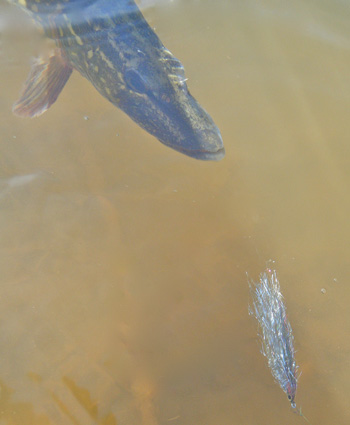 -It’s great fun! The action is ultra visual, and the fight of even a modest fish is terrific on fly tackle.
-It’s great fun! The action is ultra visual, and the fight of even a modest fish is terrific on fly tackle.
-It’s naturally deadly. Fish already know exactly what flies and nymphs are. And with no floats, leads or feeders to spook them, you can trick wily fish.
-It’s light. Are you tired of carting about loads of gear? With just a rod, a net and a handful of basics, you’re free to roam.
-It’s cheap. Once you have a basic set up, there are no bait costs and fishing for coarse species is usually far cheaper than trout or salmon.
-It’s personal. Get to know the life in your favourite waters better. From the different nymphs, flies and bugs present to the habits of the fish themselves, there’s so much to discover.

Now let’s look a little closer…
What’s the most thrilling way to fish you can imagine? For some it would be free-lining a bait to large carp at close quarters; others would picture a float cast among bubbling tench, or the sudden rush of a pike hitting a lure. Like many other anglers, it’s sight fishing that gets me every time. To spot a fish and trick it before your very eyes- now that’s exciting stuff. It’s heart-stopping enough with bait, but have you ever considered casting a fly into the mix?
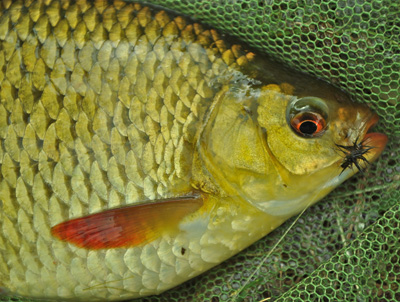 For too long, we’ve been fed the same old bull about flyfishing. It’s a fussy art form, enjoyed by rich old men and the bloke from that stupid Yellow Pages advert, reserved for exclusive trout and salmon waters, right? This is of course, (as JR Hartley would almost certainly not put it- even if he were a real person) complete and utter bxxxxxxs. Fish of all species will take an artificial fly. It’s a refreshingly simple, subtle and deadly way to fish. Anyone can do it and it’s awesome fun.
For too long, we’ve been fed the same old bull about flyfishing. It’s a fussy art form, enjoyed by rich old men and the bloke from that stupid Yellow Pages advert, reserved for exclusive trout and salmon waters, right? This is of course, (as JR Hartley would almost certainly not put it- even if he were a real person) complete and utter bxxxxxxs. Fish of all species will take an artificial fly. It’s a refreshingly simple, subtle and deadly way to fish. Anyone can do it and it’s awesome fun.
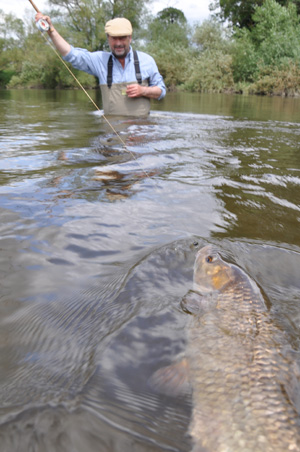 The only mystery is why we don’t already cast flies for carp and chub, roach and dace on a more regular basis. We take great trouble to wean the fish onto our baits- and yet their natural diet is all around us. From the most featureless little pond to the biggest river, fish gorge naturally on bloodworms, midges and mayflies; shrimps, snails and nymphs. Anyone who has looked across the surface of the water on a mild evening will have seen those telltale rises and swirls. The fish are not, contrary to belief, doing this to wind you up; they’re just doing what comes naturally. You can curse them as you sit twiddling your thumbs- or grab a box of flies!
The only mystery is why we don’t already cast flies for carp and chub, roach and dace on a more regular basis. We take great trouble to wean the fish onto our baits- and yet their natural diet is all around us. From the most featureless little pond to the biggest river, fish gorge naturally on bloodworms, midges and mayflies; shrimps, snails and nymphs. Anyone who has looked across the surface of the water on a mild evening will have seen those telltale rises and swirls. The fish are not, contrary to belief, doing this to wind you up; they’re just doing what comes naturally. You can curse them as you sit twiddling your thumbs- or grab a box of flies!
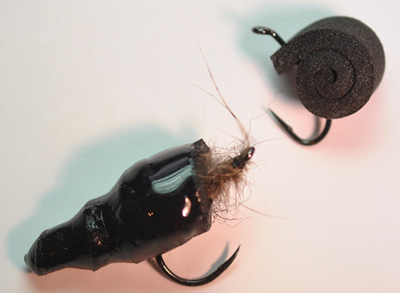 With a fresh approach and some suitable artificial flies, a new world opens to the coarse angler. A more intimate world, where our clues come from the water itself and you get that addictive buzz of tricking fish into mistaking your offering for a living thing. And that’s just the take itself- nothing bends quite like a fly rod and even a modest fish will show its strength and agility to the full.
With a fresh approach and some suitable artificial flies, a new world opens to the coarse angler. A more intimate world, where our clues come from the water itself and you get that addictive buzz of tricking fish into mistaking your offering for a living thing. And that’s just the take itself- nothing bends quite like a fly rod and even a modest fish will show its strength and agility to the full.
Starting Points
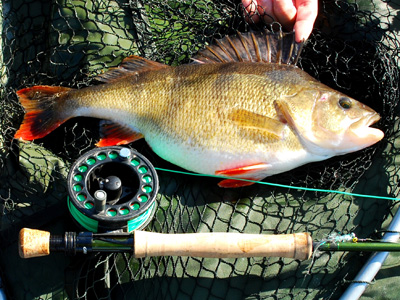 The chances are there are already plenty of waters near you that will respond to the fly. But where is the best place to start? ‘Flyfishing for Coarse Fish’ has been quite an adventure- and you’ll even find species such as tench and zander in its pages. It’s all possible, all good fun- and probably enough to make some of the godfathers of fly fishing turn three-sixties in their graves. Or perhaps not? Look through the history of the sport and anglers from Izaak Walton to Dick Walker knew all about the deadliness of flies for the species we tend to target with maggots, pellets and floats. It’s hardly rocket science that coarse fish eat nymphs, bugs and flies. They weren’t just sat there waiting for you to dump in half a stone of pellets or boilies.
The chances are there are already plenty of waters near you that will respond to the fly. But where is the best place to start? ‘Flyfishing for Coarse Fish’ has been quite an adventure- and you’ll even find species such as tench and zander in its pages. It’s all possible, all good fun- and probably enough to make some of the godfathers of fly fishing turn three-sixties in their graves. Or perhaps not? Look through the history of the sport and anglers from Izaak Walton to Dick Walker knew all about the deadliness of flies for the species we tend to target with maggots, pellets and floats. It’s hardly rocket science that coarse fish eat nymphs, bugs and flies. They weren’t just sat there waiting for you to dump in half a stone of pellets or boilies.
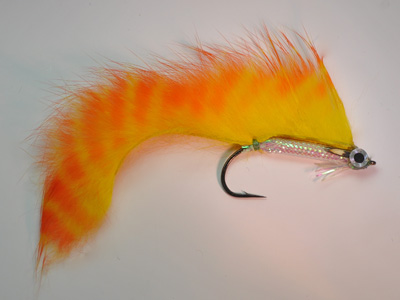 Some fish are easier than others however. I would make no hesitation to recommend a light outfit (say something in the 8-9 foot range, in a 4-6 weight class) and a crack at one of the smaller, free rising species out there. You’ll catch even on murky day ticket pools when the fish are browsing near the surface- but clear, natural waters are better.
Some fish are easier than others however. I would make no hesitation to recommend a light outfit (say something in the 8-9 foot range, in a 4-6 weight class) and a crack at one of the smaller, free rising species out there. You’ll catch even on murky day ticket pools when the fish are browsing near the surface- but clear, natural waters are better.
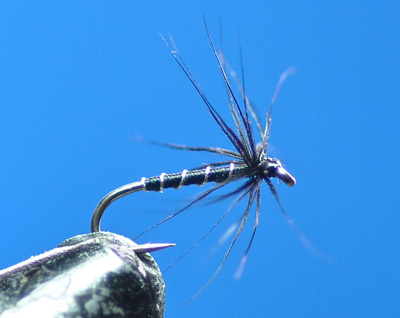 Roach and rudd would be right near the top of the list for some excellent, accessible sport. Many trout flies are rather big, but try small dry flies or nymphs in the 14-18 size bracket and you’ll find both these species willing takers. Make things easy for yourself at first by finding visible fish and casting where you can see the action as it happens. It’s great fun to watch a fly stolen off the surface, but slow sinking wet flies fished in the top two feet can be deadlier still. Try small spiders or light buzzers.
Roach and rudd would be right near the top of the list for some excellent, accessible sport. Many trout flies are rather big, but try small dry flies or nymphs in the 14-18 size bracket and you’ll find both these species willing takers. Make things easy for yourself at first by finding visible fish and casting where you can see the action as it happens. It’s great fun to watch a fly stolen off the surface, but slow sinking wet flies fished in the top two feet can be deadlier still. Try small spiders or light buzzers.
Chub are another obliging species. You could try running weighted nymphs through those swims you might usually trot with maggots- but the real highlight is warm weather sport with bushy dry flies. Provided you can get at the fish without spooking them, a well placed hopper, sedge or even a daddy longlegs will be snaffled by a big mouth in an instant.
It might be slightly less natural, but the other alternative is to tackle carp with ‘bait’ flies resembling mixers or bread. Purists might scoff, but it’s great fun- rather like free-lining, but even more versatile and entertaining.
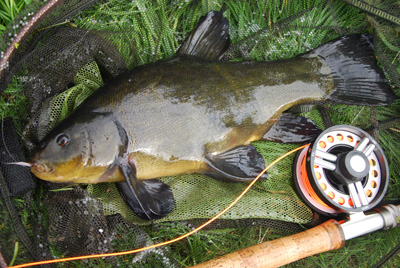 It’s Easy to Fly!
It’s Easy to Fly!
It amazes me how many anglers still assume you need fancy kit, weeks of casting practice or a knowledge of insects to rival David Bellamy in order to fly fish. You don’t need a £500 rod- and in fact many perfectly good tools are available for a small fraction of the price (A 4 or 5 weight rod in the Greys G-Series range, ideal for roach, dace and chub, could set you back less than £65 for example). A basic floating fly line, some leaders and a handful of suitable flies and you’re away.
The casting itself takes a little getting used to, but with a little practice anyone can do it. After all, you didn’t cast effortlessly with a fixed spool reel the first time now did you? It can help to go with a more experienced friend though- or book a guide for half a day to get you started on the right foot.
The flies themselves need hold no fears either. Yes, it’s helpful (and hugely rewarding!) to discover the world of bugs and insects living in and around the water. But with a few tried and trusted all-rounders you’ll soon be getting takes, and with this in mind, the book contains a huge range of favourites, old and new.

In fact, many of the basics you already know from your existing fishing also apply to fly tactics: find the fish, don’t spook them and present something that looks worth eating in a natural manner.
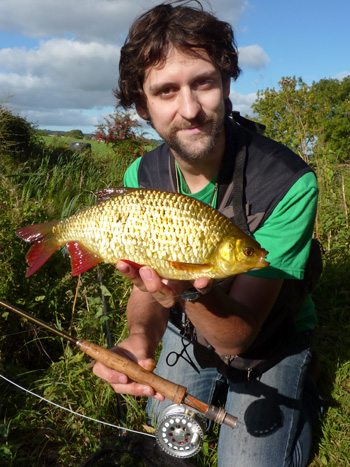 Before you know it…
Before you know it…
The more you think about it, the more flyfishing makes perfect sense for tempting coarse fish. Unlike an exclusive game river, it’s cheap. It’s stealthy too and you can travel extremely light (if you’re used to bringing the kitchen sink, you’ll be overwhelmed by a new sense of freedom!). It’s also something subtle and different; don’t be too surprised if you get that guilty pleasure on your local waters at the discovery of a deadly method hardly anybody else is using.
Ok, so I’m biased- but a book like “Flyfishing for Coarse Fish” is long overdue. The aim is to take the mystery out of the whole process, with stacks of helpful tips and over 60 tried and trusted fly patterns. Virtually all your favourite species get their own individual chapter, with tackle, tactics and inspiring pictures.
 That said, there is massive scope for adventure and discovery. Even in our current age of information overload, this is genuinely fresh and exciting territory. It’s not about fashionable baits or readymade rigs, but an utterly absorbing way of getting to know the waters and fish species more intimately. Who knows where it might lead you? From giant perch and snail-crunching carp to the bordering-on-insane efforts of Bob James to land a catfish on the fly, it’s all there to discover. You can try for any species and copy virtually any living prey item. Flyfishing is no longer for rich boys and exclusive game waters only- everyone is invited and the only limit is your own imagination. Let’s fly!
That said, there is massive scope for adventure and discovery. Even in our current age of information overload, this is genuinely fresh and exciting territory. It’s not about fashionable baits or readymade rigs, but an utterly absorbing way of getting to know the waters and fish species more intimately. Who knows where it might lead you? From giant perch and snail-crunching carp to the bordering-on-insane efforts of Bob James to land a catfish on the fly, it’s all there to discover. You can try for any species and copy virtually any living prey item. Flyfishing is no longer for rich boys and exclusive game waters only- everyone is invited and the only limit is your own imagination. Let’s fly!
Flyfishing for Coarse Fish is out this month from Merlin Unwin Books (RRP £20). This full colour hardback is packed with beautiful photography, unique flies and a wealth of information on all the major coarse fish species.
For more info, articles and fishing exploits from Dom Garnett,check out his website HERE










